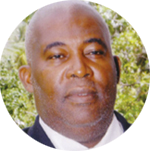
WELCOME students to the Open School for the third and final term. I also wish to welcome students to another lesson in the Open School on Caribbean Primary Exit Assessment. The school is open to parents, guardians, teachers, students and members of the public. This is the eleventh in a series of lessons which is done in the Open school every two weeks. It is my hope that students will acquire knowledge and skills which will enable them to gain a better understanding of this assessment model.
At the end of the lesson, students will be able to (a) explain, in a simple sentence, CPEA as an assessment tool; (b) students will be able to list two strategies in administering the assessment model.
The Ministry of Education has done away with the Common Entrance Examination as we knew it and has introduced to our students the Caribbean Primary Exit Assessment which started in Grade Five in 2021 and continued in Grade Six in the academic year 2022 to 2023. The final part of the assessment which was prepared by the Caribbean Examination Council (CXC), was administered in June 2022.
Now it is very important for students to understand the Caribbean Primary Exit Assessment.
The Common Entrance Examination was mainly an academic exercise. That is to say that students in Grade 6 would sit and write an examination in June of each year recalling the knowledge and skills that they were taught or had acquired from Grade 1 to Grade six and responding to questions on an examination paper with some short answers, but mainly questions with multiple responses. That is why the examination paper is referred to as ‘Multiple Choice’.
Now those students who are mainly academic, would survive, and do extremely well. And those students who are practical and have technical skills would have to be happy with their placement in the examination results. Thank goodness for CPEA! It has come rather late but better late than never.
In the past, when Common Entrance Examination results were released, it’s one or two schools that would be highlighted with a top student and those schools would receive all the praises. I had been in the Education system for 42 years and a Principal of a Primary School for 18 of those years. And I can tell you the number of students who broke down in tears in my presence when I gave the Common Entrance results. And many were quite capable students in the practical and technical areas. It is left for you to determine how I felt on those occasions.
I predict that at least 10 schools on the island would produce top students in the CPEA, beginning in 2022. Mark my word!
Now what exactly is the Caribbean Primary Exit Assessment? The Caribbean Exit Assessment is an assessment that takes into account the literacies as well as practical and technical skills of students. That is why CPEA is referred to as authentic assessment tool or instrument. The assessment takes into account the holistic development of the child. That is: The academic, practical as well as the child who is endowed with technical skills. So the whole child is assessed.
The chairman of the Advisory Council of the Caribbean Examination Council who piloted the assessment tool was Dr. Desmond Broomes of Barbados, himself a mathematician, who has since passed away.
Now let us take a look at the components and processes involved in the CPEA.
The assessment begins in Grade Five. The assessment will be looking at the students under normal, non-threatening classroom conditions or situations like: carrying out and documenting projects; Book Reports; Can do skills; self-assessment and teacher prepared tests to be done in groups in a non-threatening environment, and a pen and paper test which are important parts of the assessment.
Now during my teaching career, I remember the number of students as well as adults who would screen their faces or even tremble at the mention of the word ‘Test’ or ‘Exam’. Just the sight of the word ‘test’ or ‘exam’ would have failed them already.
The Caribbean Exit Assessment is intended to consider Projects, Reports, Skills and self-assessment as 40%. That is almost half of the examination score. That gives the hands-on and technical students an opportunity to ‘shine”. There is nothing better than that. And students would be coming home to their parents with better scores to their names.
Now it is important to highlight that CPEA would take into account some fundamental principles of learning as follows: Pupils’ Active Participation in their own learning improves performance; parental involvement in pupils learning improves pupils’ performance and teacher interaction with pupils or student, and providing feedback improves student performance.
One may ask how do parents get involved in CPEA. They can assist in enabling students to obtain the material for the Projects, those parents who are capable can provide feedback to their child, and they would ensure that their children attend school regularly.
At this point I must indicate that the Caribbean Examination Council (CXC) prepares the pen and paper test that is worth 60% of the final score. In other words Projects, Reports, Can do skills and Self- assessment is worth 40% and the Pen and paper test with multiple test items is worth 60% of the total score.
At this point I must comment the CMO at the Ministry of Health and all her various teams, and the COVID-19 Committee for their work which enabled our students to write the CPEA Examination at the various schools in St. Lucia during the month of June, 2022.
Now two questions for you: (1) What is the Caribbean Primary Assessment (CPEA)
(2) Provide or name two components of the CPEA tool or mechanism.
Now you can mark yourself out of 100%. 60% for question (1), and 40% of question (2).












